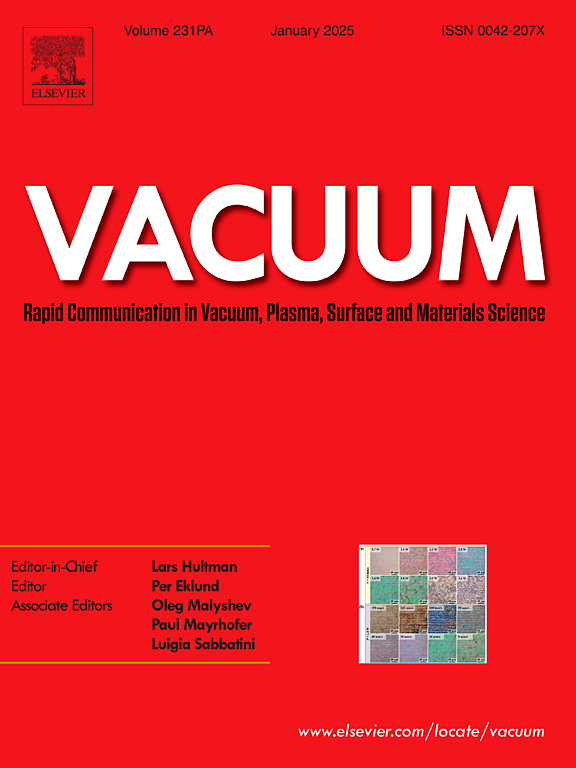Microstructure evolution and tensile deformation behavior of an ultrahigh-strength Al-Mg-Mn-Sc-Zr alloy fabricated by laser powder bed fusion
IF 3.8
2区 材料科学
Q2 MATERIALS SCIENCE, MULTIDISCIPLINARY
引用次数: 0
Abstract
In recent years, it has been proved to be an effective strategy to obtain high strength and ultrahigh-strength Al alloys by laser powder bed fusion (LPBF). However, these ultrahigh-strength LPBFed Al alloys are difficult to achieve good ductility. In this work, high content of Sc/Zr modified Al-Mg-Mn-Sc-Zr alloy was prepared by LPBF. The high content of Sc/Zr brought unique heterogeneous microstructure and further affected the tensile deformation behavior of the alloy. It was found that the precipitation of primary Al3(Sc,Zr) phase significantly increased the number of nucleation sites at the front of the liquid-solid interface and promoted the columnar-to-equiaxed transition (CET), leading to a microstructure of near-full equiaxed grains with a grain size range from 0.55 μm to 1.10 μm. Tensile tests showed that the yield strength of the as-built sample was 442 MPa, and the strengthening effect brought by ultrafine grains plays a leading role, which is difficult to achieve for the Al-Mg-Mn-Sc-Zr alloy with low Sc/Zr content. After aging treatment, the yield strength of the LPBFed Al-Mg-Mn-Sc-Zr alloy reached up to 613 ± 5 MPa under the combined effects of grain-boundary strengthening and precipitation strengthening. The decrease of work-hardening capacity induced a longer Lüders elongation after aging, but the reliable dislocation accumulation ability of coarse grains still existed, which finally made the elongation of the as-aged sample reach 11.7 ± 0.5 %.
激光粉末床熔合制备超高强度Al-Mg-Mn-Sc-Zr合金的组织演变及拉伸变形行为
近年来,激光粉末床熔合已被证明是获得高强度和超高强度铝合金的有效方法。然而,这些超高强度的LPBFed铝合金很难达到良好的延展性。采用LPBF法制备了高含量的Sc/Zr改性Al-Mg-Mn-Sc-Zr合金。高含量的Sc/Zr带来了独特的非均匀组织,进一步影响了合金的拉伸变形行为。结果表明,初生Al3(Sc,Zr)相的析出显著增加了液固界面前沿的形核位点数量,促进了柱向等轴转变(CET),形成了晶粒尺寸为0.55 ~ 1.10 μm的近全等轴晶组织。拉伸试验结果表明,铸态试样的屈服强度为442 MPa,其中超细晶粒带来的强化效果起主导作用,这对于Sc/Zr含量较低的Al-Mg-Mn-Sc-Zr合金来说是难以实现的。时效处理后,在晶界强化和析出强化的共同作用下,LPBFed Al-Mg-Mn-Sc-Zr合金的屈服强度达到613±5 MPa。时效后,加工硬化能力的降低导致了较长的 ders伸长率,但仍然存在可靠的粗晶位错积累能力,最终使时效试样的伸长率达到11.7±0.5%。
本文章由计算机程序翻译,如有差异,请以英文原文为准。
求助全文
约1分钟内获得全文
求助全文
来源期刊

Vacuum
工程技术-材料科学:综合
CiteScore
6.80
自引率
17.50%
发文量
0
审稿时长
34 days
期刊介绍:
Vacuum is an international rapid publications journal with a focus on short communication. All papers are peer-reviewed, with the review process for short communication geared towards very fast turnaround times. The journal also published full research papers, thematic issues and selected papers from leading conferences.
A report in Vacuum should represent a major advance in an area that involves a controlled environment at pressures of one atmosphere or below.
The scope of the journal includes:
1. Vacuum; original developments in vacuum pumping and instrumentation, vacuum measurement, vacuum gas dynamics, gas-surface interactions, surface treatment for UHV applications and low outgassing, vacuum melting, sintering, and vacuum metrology. Technology and solutions for large-scale facilities (e.g., particle accelerators and fusion devices). New instrumentation ( e.g., detectors and electron microscopes).
2. Plasma science; advances in PVD, CVD, plasma-assisted CVD, ion sources, deposition processes and analysis.
3. Surface science; surface engineering, surface chemistry, surface analysis, crystal growth, ion-surface interactions and etching, nanometer-scale processing, surface modification.
4. Materials science; novel functional or structural materials. Metals, ceramics, and polymers. Experiments, simulations, and modelling for understanding structure-property relationships. Thin films and coatings. Nanostructures and ion implantation.
 求助内容:
求助内容: 应助结果提醒方式:
应助结果提醒方式:


